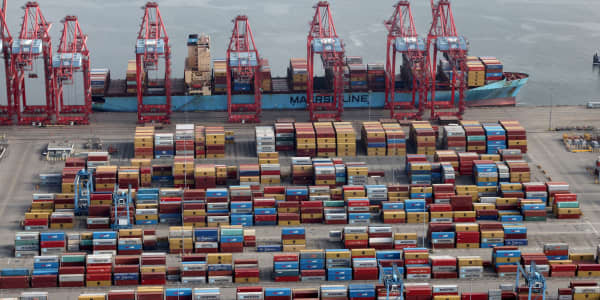West Coast port management and the labor union representing port workers reached a tentative deal late on Wednesday after the intervention of California labor market pro and Biden acting Labor Secretary Julie Su in the negotiations in San Francisco, but it could be months before the full union votes to approve the deal.
The tentative agreement was a welcome development after weeks of escalating tensions between workers and port management, resulting in delays in vessel servicing, congestion at ports, in containers, and out to trucking, as well as some port shutdowns. But the proposed labor deal is far away from being fully approved, according to the International Longshore & Warehouse Union. While the union statement on the deal was positive, it laid out a process that still has several steps to go before the deal moves ahead.
“The ILWU is pleased to have reached a tentative agreement with PMA last night,” said a statement from ILWU President Willie Adams on Thursday afternoon. “While the final decision is up to our members, we feel our time at the bargaining table was well spent and that the agreement represents the hard work of our rank and file and the sacrifices they made during the pandemic.”
Earlier during port disruptions, the ILWU had pushed back against assertions from the Pacific Maritime Association, which negotiates on behalf of the ports, that the actions at ports from Seattle down to LA — which included workers not showing up for shifts and being removed from shifts for slow work — were “coordinated,” saying that rank and file members were “voicing their displeasure.”
The next step for the ILWU is to follow ratification procedures that start with a contract caucus that convenes delegates from its 29 locals up and down the West Coast. “These delegates will carefully review the tentative agreement and make a recommendation to the rank and file who will then vote on the tentative agreement,” Adams said.
He noted that this process takes a few months to complete.
While it has been reported during the labor strife that wages and automation were among sticking points in the labor talks, Adams declined to provide any details on the deal.
“We will not be sharing details of the tentative agreement publicly until we have completed the ratification process,” he stated.
He did issue “a special thank you” to acting Secretary of Labor Su “whose leadership helped us cross the finish line.”
President Biden nominated Acting Secretary Su on February 28 to replace Labor Secretary Marty Walsh, who stepped down in March. Su has the backing of many labor unions, including the United Mine Workers, NABTU, LiUNA, the IBEW, and AFL-CIO, but has also received support from business leaders, including a group of 250 executives who sent a letter to the Senate backing her nomination, as well as the Los Angeles Chamber of Commerce. She was previously confirmed by the Senate to serve as the deputy secretary of labor on July 13, 2021.
President Biden released a statement on Thursday, saying “This deal shows collective bargaining works. When employers and workers come together to agree on a deal that works for both of them it’s good for the economy and keeping our supply chain open. … This is going to have a real positive impact on trade.”
Pressure had been mounting from industry groups, including retail, manufacturers, and the U.S. Chamber of Commerce — which has estimated a widespread strike along the West Coast could cost approximately $1 billion per day — for the Biden administration to help broker a deal as the port issues began to build to congestion levels not seen since the Covid supply chain chaos. President Biden also received some pushback from unions after he signed Congressional legislation late last year to avert a railroad union strike.
The threat of a strike on the West Coast remains, with ILWU Canada workers authorizing a strike in a landslide vote this week that received over 99% rank-and-file approval, though the first potential strike date is June 24. The Canadian ports of Vancouver and Price Rupert had been seen as relief valves for shippers during the issues at U.S. West Coast ports. Trade issues are exacerbated by a Panama Canal that has been struggling with low water levels due to drought, limiting the weight of vessels that can pass through it, and the alternative — if the much longer and more costly — trip to East Coast ports.
Source: Hellenic Shipping News





